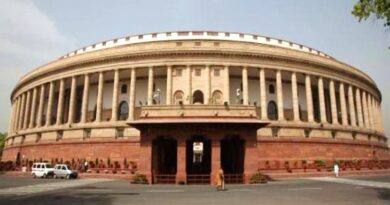Chakma and Hajong Communities
Context:
Recently, the National Human Rights Commission (NHRC) in its order directed Ministry of Home Affairs and Arunachal Pradesh to submit action taken report within six weeks against alleged racial profiling and relocation of the Chakmas and Hajongs Communities from the State.
Contents
Chakma and Hajong Communities:
- The Chakma and Hajong, originally residents of the Chittagong Hill Tracts of former East Pakistan, had to flee when their land was submerged by the Kaptai dam project on the Karnaphuli River in the 1960s. Buddhists by faith, the Chakmas faced religious persecution in East Pakistan along with the Hajongs, who are Hindus.
- They fled erstwhile East Pakistan (now Bangladesh) in 1964-65 and came to India. The groups entered India through what was then the Lushai Hills district of Assam (today’s Mizoram).
- While some stayed back with Chakmas already living in the Lushai Hills, the Indian government moved a majority of the refugees to North-East Frontier Agency (now Arunachal Pradesh).
- The rehabilitation was under a centrally-sponsored plan following a series of discussions between the representatives of the Central government, the NEFA administration and local tribal leaders.
Chakma-Hajong Refugees
Chakmas are Buddhist and Hazongs are Hindu refugees from East Pakistan, who prior to partition, lived in the Chittagong Hill Tract and the Mairnen Singh districts (now in Bangladesh). From partition till the 1970s, some of the Hindu, Buddhist and other tribes fled from their original habitats to India and spread into North-Eastern states of Assam, Meghalaya, Mizoram, Tripura and Arunachal Pradesh. These people had to flee due to two reasons viz. religious persecution in Pakistan; and displacement caused by the Kaptai Hydel Power Project {in Bangladesh now} in the 1960s. Since then, they were treated differently in different states and today, there are three categories of Chakmas / Hajongs in India:
- A small fraction of these people who settled in Assam, Meghalaya, Mizoram and Tripura got citizenship rights and ST status.
- Even smaller fractions that live in south-west Mizoram along the Chittagong Hill Tract region enjoy district level autonomy to plan and implement their own development schemes.
- Large fraction of Chakma and Hajongs that were moved to a vacant land in NEFA (now Arunachal Pradesh) got tangled into political issues and are still foreigners.
Background:
- In 2015, the Supreme Court directed the State to grant them citizenship, but this had not yet been implemented.
- In a judgment in 1996, the Court had stated that the “life and personal liberty of every Chakma residing within the State shall be protected”.
- In light of these orders and given that most of the Chakma/Hajong community members were born in the State and have been living peacefully, the Arunachal Pradesh Chief Minister’s announcement, in August 2021, that they would be relocated outside the State and that steps would be taken for a “census” of the communities was clearly unwarranted.
- After that Chakma Development Foundation of India (CDFI) requested urgent intervention of the NHRC against racial profiling of 65,000 Chakma and Hajong tribals of Arunachal Pradesh through illegal census which was scheduled to commence from 31st December, 2021 (later plan of census was dropped) for their deportation / expulsion/ relocation from the State.
- Racial profiling is government or police activity that involves using people’s racial and cultural characteristics to identify people to investigate.
Issues with the Special Census:
- Chakma organisations said the census was nothing but racial profiling of the two communities because of their ethnic origin and violated Article 14 of the Constitution of India and Article 1 of the International Convention on Elimination of Racial Discrimination ratified by India.
- Article 14 says that no person shall be denied treatment of equality before the law or the equal protection of the laws within the territory of India.
- The United Nation General Assembly in October 1966 proclaimed 21st March as the International Day for the Elimination of Racial Discrimination, to be commemorated annually.
Citizenship Status:
- Out of the 65,000 Chakmas and Hajongs, about 60,500 are citizens by birth under Section 3 of the Citizenship Act, 1955, after having been born before 1st July 1987, or as descendants of those who were born before this date.
- The applications of the remaining 4,500 surviving migrants following the 1996 Supreme Court order have not been processed to date.
- The Citizenship (Amendment) Act of 2019, which amended two sections of the 1955 Act, has nothing to do with the Chakma-Hajongs since they were permanently settled by the Union of India in the 1960s.
- And since 95% of the migrants were born in the North-East Frontier Agency or Arunachal Pradesh, the Inner Line Permit mandatory under the Bengal Eastern Frontier Regulation of 1873 for outsiders seeking to visit the State, also does not apply to them.
Way Forward
- The solution to the decades-old issue lies in the State respecting the rule of law and the judgements of the Supreme Court.
- There has to be an end to politicians and political aspirants deriving mileage from the Chakma-Hajong issue.
Related Article:
Source: The Hindu
You can find many articles on DEVELOPMENT PROCESS (part of GS II) in our website. Go through these articles share with your friends and post your views in comment section.
Discover more from Simplified UPSC
Subscribe to get the latest posts sent to your email.



